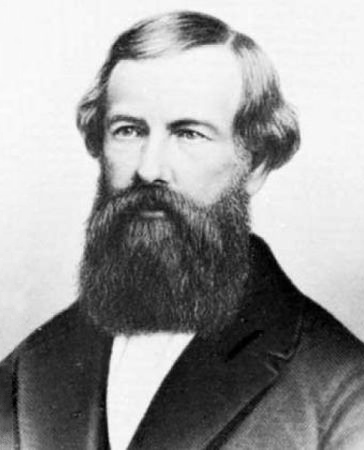
An innovation worth dying for?
Have you ever worked for a brand for which you would be willing to risk your life? This man did.
However there are plenty of brands which many people work for, for many years, but in which they personally don’t believe.
Perhaps the most famous example being Gerald Ratner.
Ratner had joined the family business in 1966 and by the 1980s had built it up to be an extremely successful chain of cut-price jewellers. The group consisted of Ratners, H. Samuel, Ernest Jones, Leslie Davis and Watches of Switzerland.
Based on their success, Ratner was asked to make a speech at a conference of the Institute of Directors at the Royal Albert Hall on 23 April 1991.
It was here he revealed what he really thought of the brand,
“We also do cut-glass sherry decanters complete with six glasses on a silver-plated tray that your butler can serve you drinks on, all for £4.95. People say, ‘How can you sell this for such a low price?’ I say, ‘Because it’s total crap’.”
He then went on to say that some of the earrings were “cheaper than an M&S prawn sandwich but probably wouldn’t last as long.”
Though he was later to claim he said these things as a joke, few were convinced. The value of the Ratner group dropped by around £500 million and the new company boss fired Ratner not long after. The group was re-named The Signet Group.
Elisha Otis was cut from a different cloth, as he was to prove in May 1854 at New York’s Crystal Palace, the main exhibition hall of America’s first World’s Fair.
Standing on top of a hoisting platform, high above the crowds at New York’s Crystal Palace, he called for everyone’s attention. As the heads turned around and up, he swung an axe and cut the rope supporting the platform. The platform began to drop and silence fell over the hall.
But the platform only dropped a few inches, and then came to a stop.
“All safe, gentlemen!” Otis announced to the crowd. Otis’ faith in his own revolutionary safety brake had been vindicated.
Elisha Otis had invented the safety elevator in 1852. He had solved the problem of rope failure that plagued elevators of that time. He installed a rope-break safety device called the safety brake (the equivalent of the modern safety gear) into the elevator. With the Otis safety brake, in the case of rope failure, a spring would force a ratchet to engage saw-tooth iron bars and safely secure the car.
However he had only sold three, throughout the whole of 1853. Early 1854 was no better so he decided he would have to do something more radical to promote his invention. He decided to purchase a display at the forthcoming Crystal Palace Exhibition.
After his potential life threatening show, not only had his faith in his invention been demonstrated but he was to get the commercial rewards he had sought.
He sold seven in the remainder of 1854 and then 15 in 1855.
 Otis is still the world’s leading lift company and it has installed elevators in some of the world’s most famous structures, including the Eiffel Tower, Empire State Building, the original World Trade Center, The Twilight Zone Tower of Terror, Petronas Twin Towers, Burj Khalifa, CN Tower and the Skylon Tower.
Otis is still the world’s leading lift company and it has installed elevators in some of the world’s most famous structures, including the Eiffel Tower, Empire State Building, the original World Trade Center, The Twilight Zone Tower of Terror, Petronas Twin Towers, Burj Khalifa, CN Tower and the Skylon Tower.
Many credit his invention as a crucial step in the path to skyscrapers as it enabled buildings and architects to reach higher and higher.
All because he truly believed in his idea and was willing to put his life on the line to prove it.
Footnote: Otis was clearly a clever marketer; he even used his business card as a selling card. As well as contact details it read, “Otis’ Life-Saving Steam Elevators are so constructed that if the rope breaks the platform cannot fall. Twelve men killed in this city (Yonkers, N.Y.) within four years with the old kind, and not one killed or hurt with Otis’ Excelsior Elevators.”